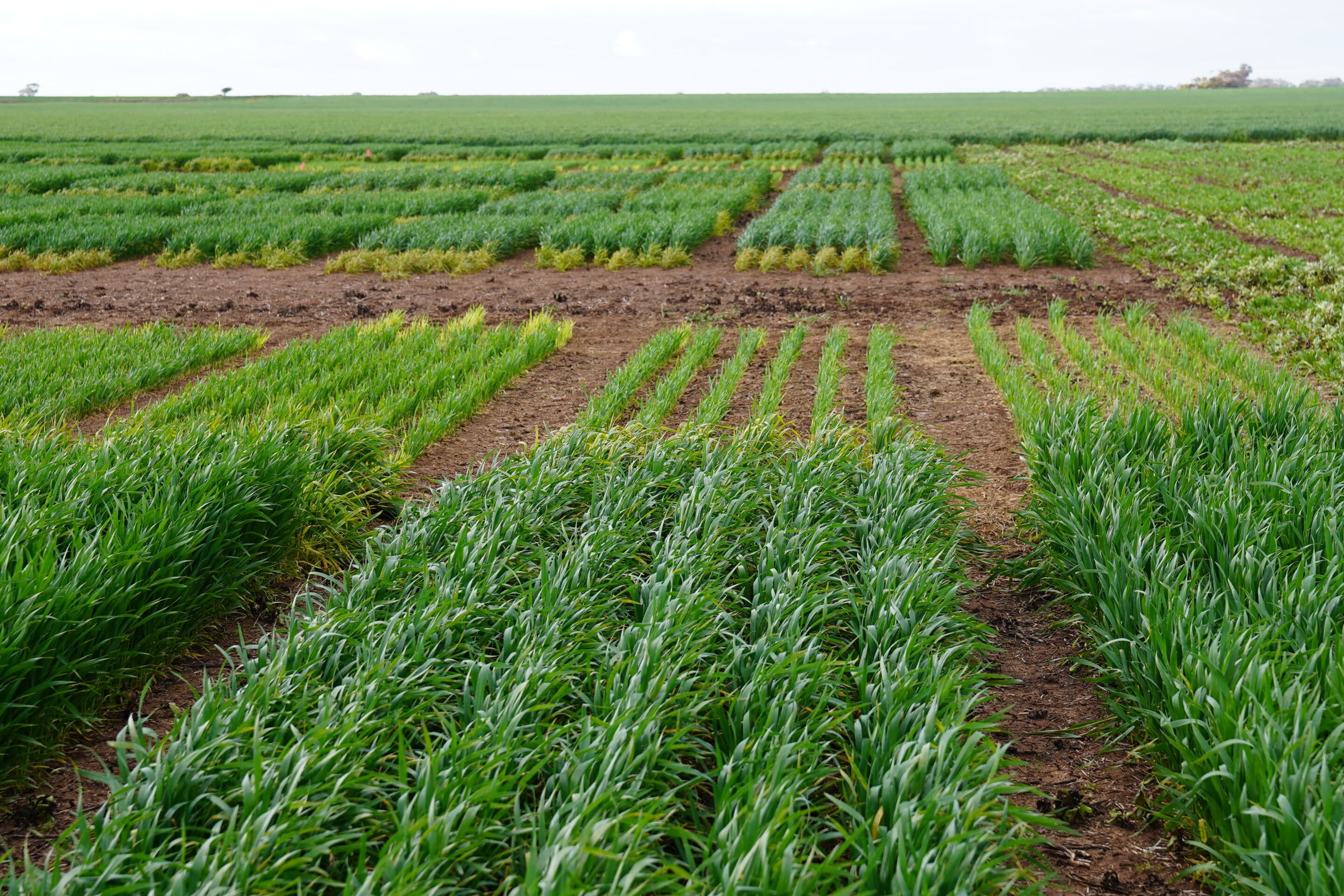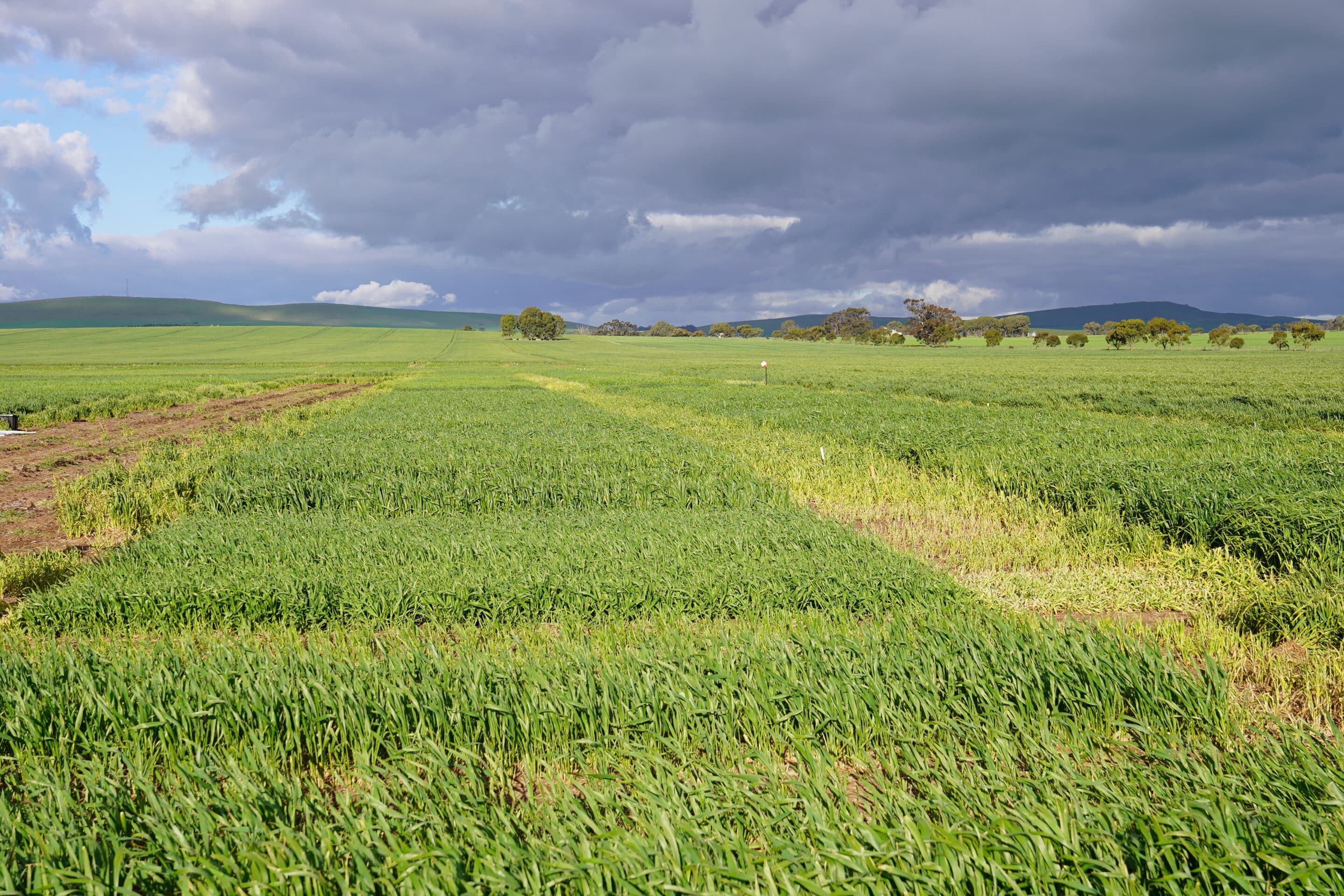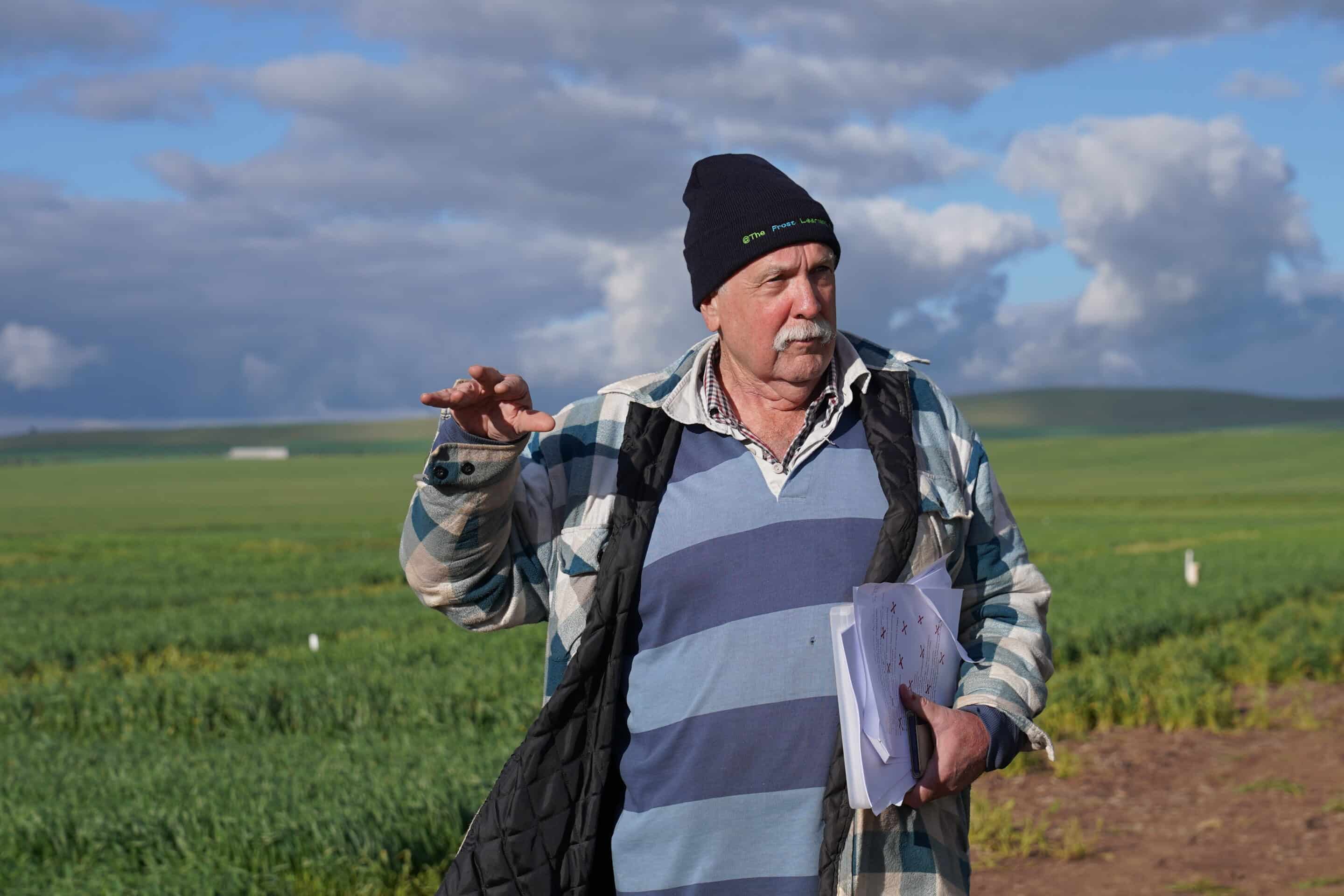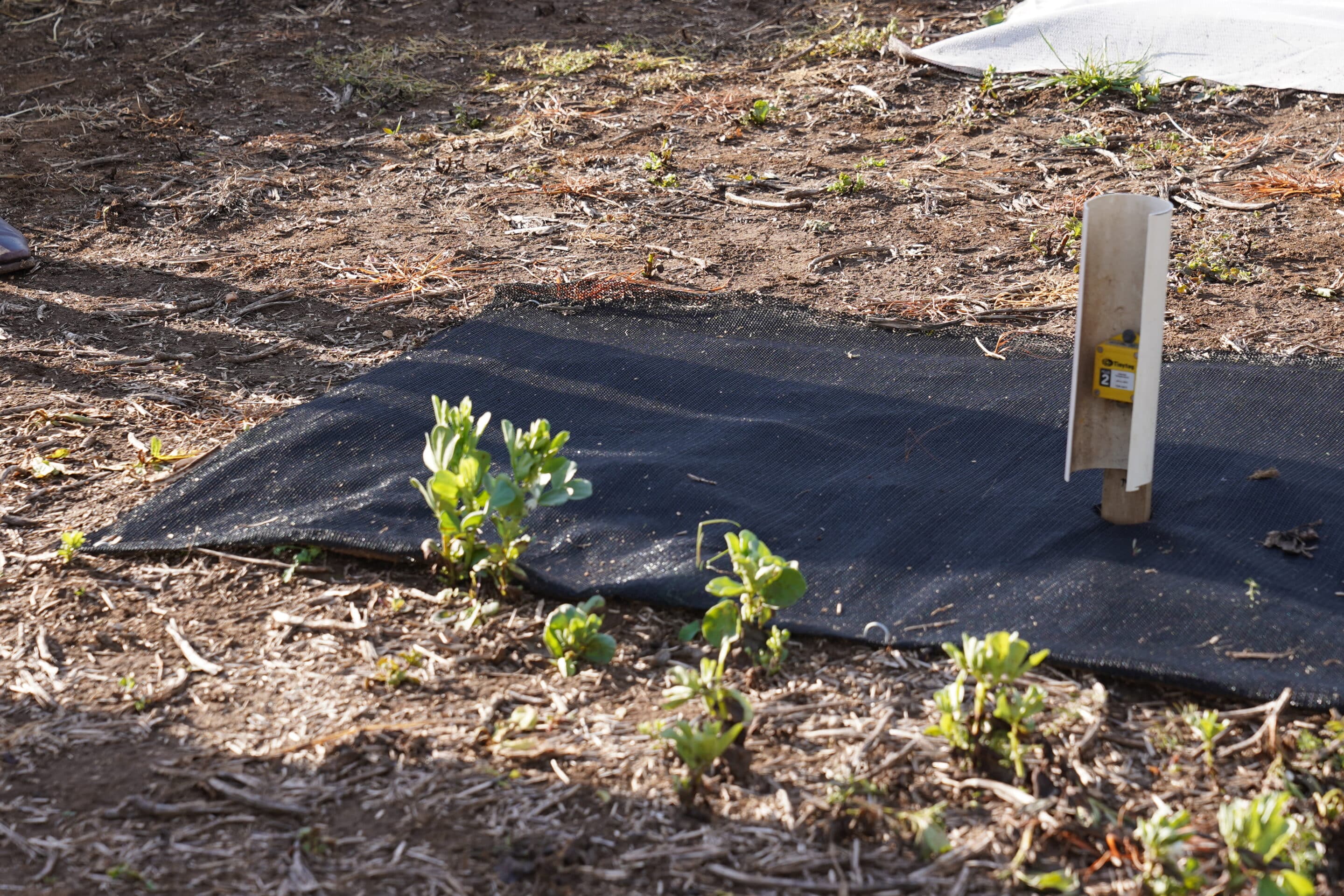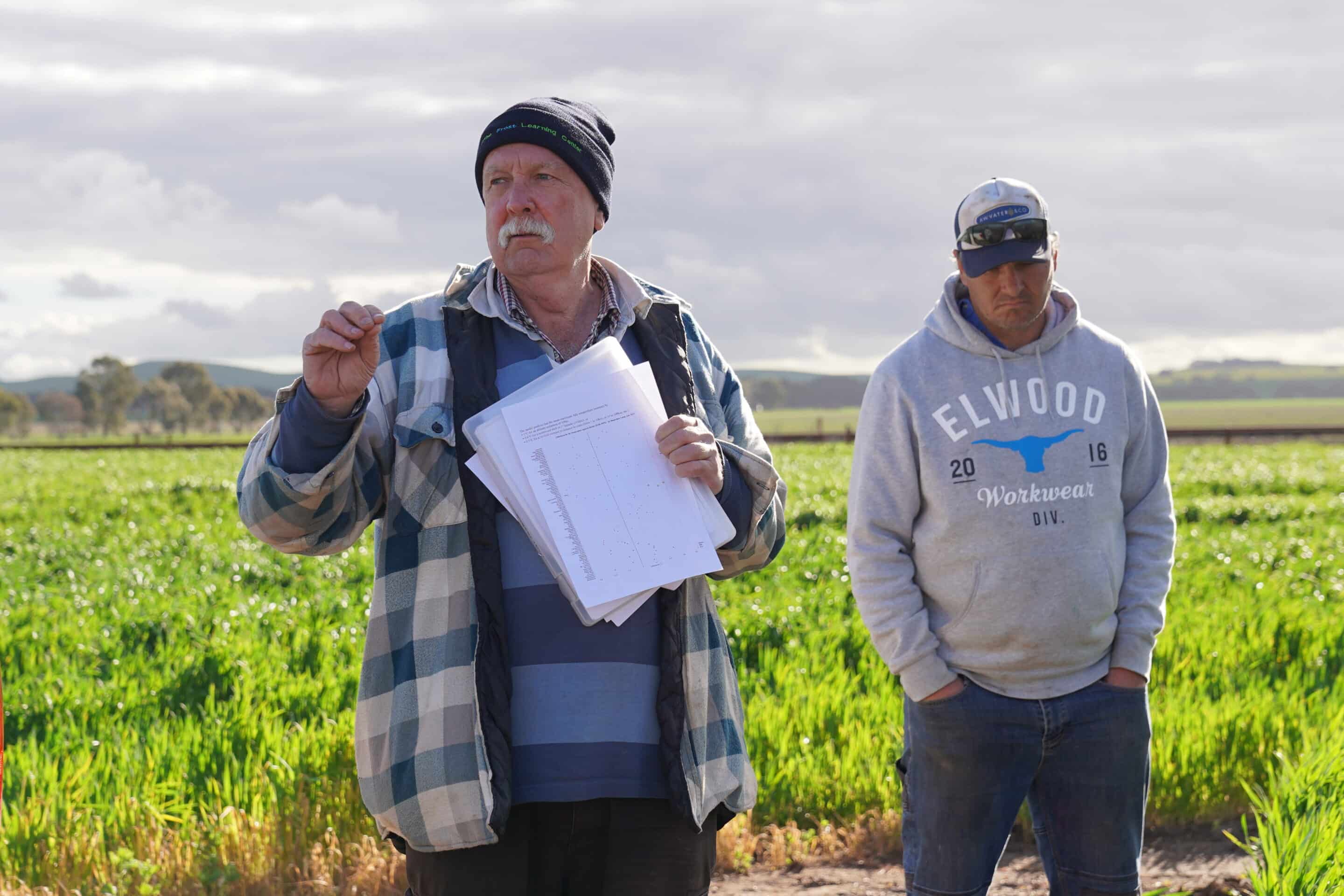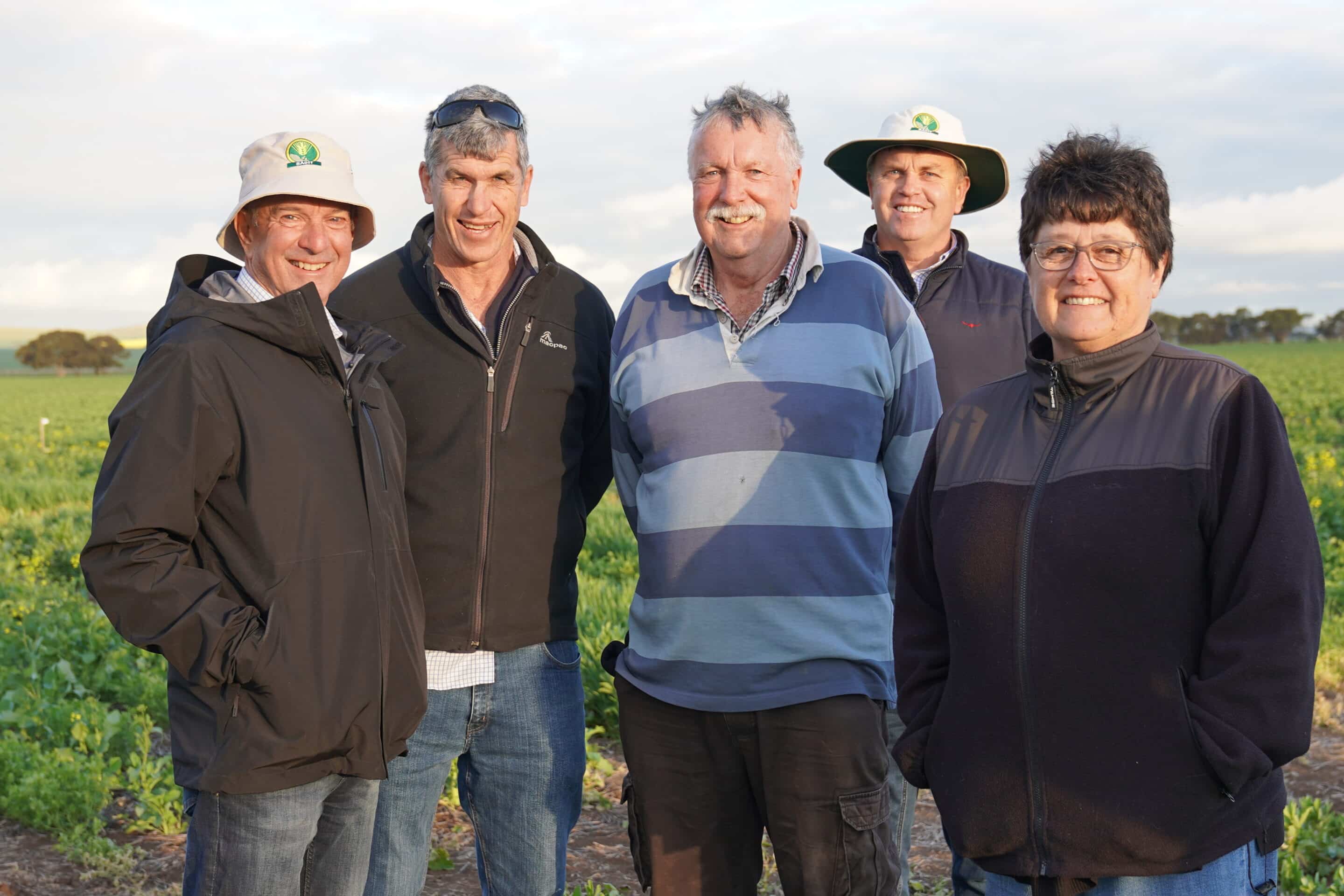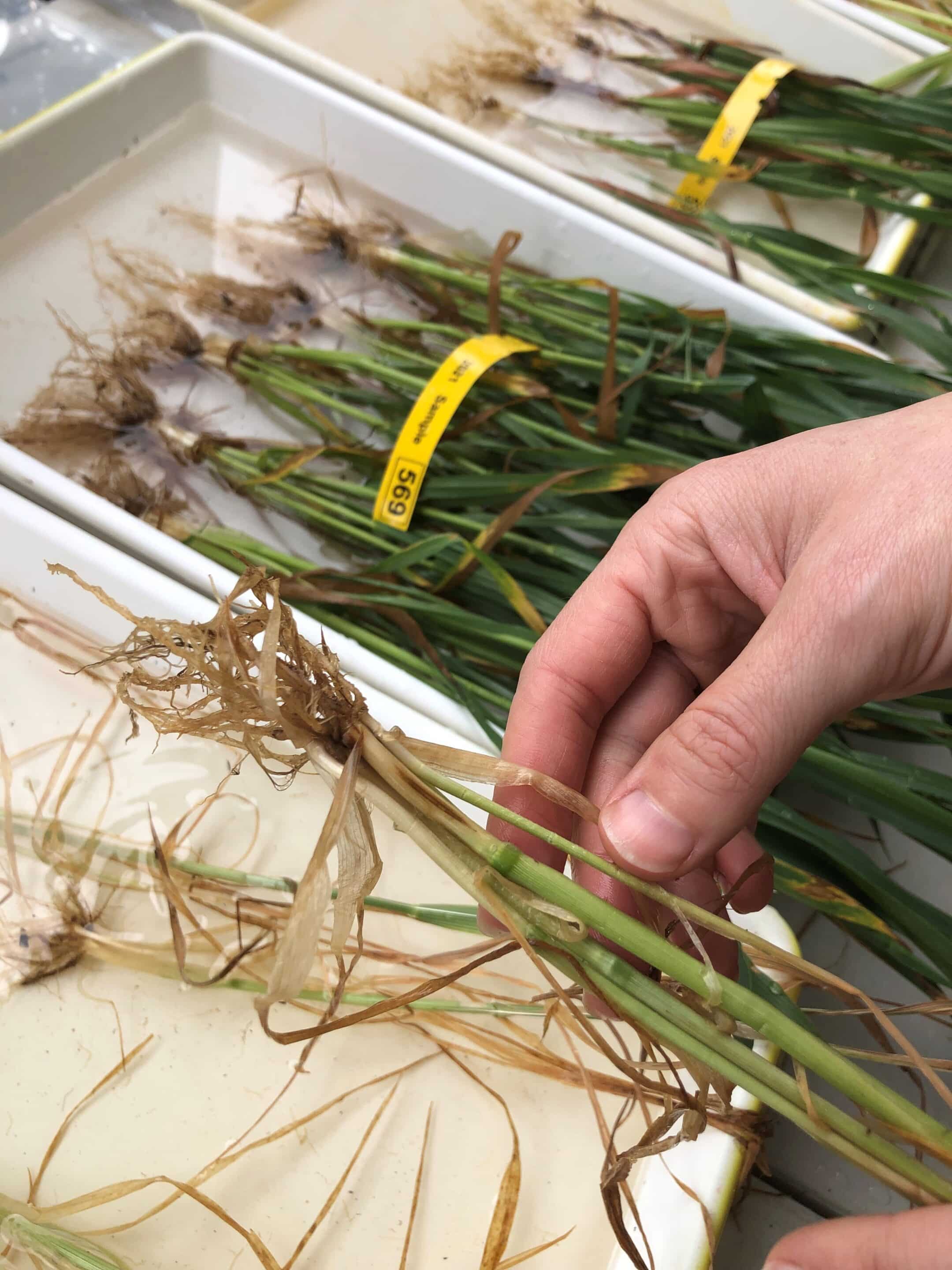START
FINISH
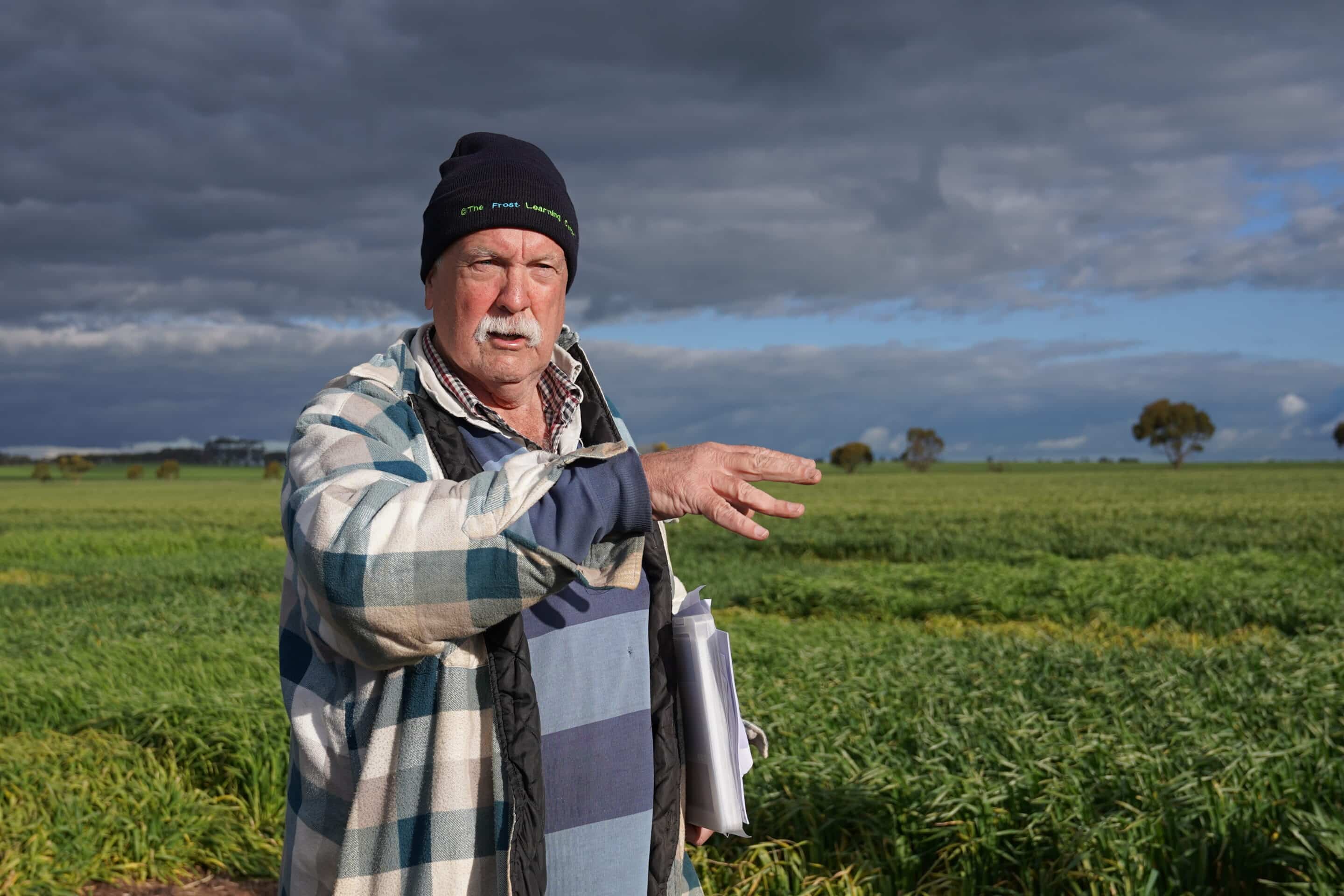
Summary
The project has shown there are methods and practices to avoid, tolerate and mitigate the impact of frost. It has also increased the knowledge of farmers and advisers as to how frost occurs, how and why frost risk management zones are important, the spatial variability of frost and identification of frost damage in crops. Ice nucleating bacteria have been identified as an important contributor to freezing and their distribution in the plant identified through the project.
Background
Frost is a major constraint to production of crops in much of South Australia. Generally, frost avoidance is achieved by having crops at sensitive growth stages after the ‘frost period’ has ended, through later seeding or longer season cultivars. The downside of this tactic is that delaying maturity often increases exposure to hot and dry conditions. Alternative tactics have an increasing role in reducing financial risk.
Research Aims
The core objective of the project was to establish a Frost Learning Centre (FLC), to provide capacity to conduct research at a single site with zones of high and low frost risk, and to provide focused extension activities to improve growers’ understanding of how frost occurs, frost management strategies and mitigation options.
In The Field
The Frost Learning Centre, co-funded by SAGIT and GRDC, was established at Farrell Flat, in a paddock which has both a ‘Red Zone’ high frost risk area and a ‘Green Zone’ with very little frost risk, allowing for research covering areas likely to experience frosts while also testing the effect of treatments on yield where no frost occurs.
A range of trials were conducted looking at phenology and variety choice, dual-purpose wheat, nitrogen, biomass, stubble, and a legume and safflower demonstration. Frost learning days were hosted at the site in both years of the project.
Results
In the two years of the project there was a large difference in frost damage at the site, with severe damage seen in 2021 but very little frost damage in 2022.
The correlation between Stevenson screen temperature, air temperature at the crop canopy and crop surface temperature can be relatively poor and results from 2021 and 2022 confirmed results from previous experiments that air temperature is not a reliable guide to frost damage.
Ice nucleating bacteria (INB): Samples were found to have INB present in large quantities, with levels higher in senesced leaves than green leaves. The presence and distribution of INB will influence the patterns of frost damage in plants. Significant quantities of INB were found on flag leaves.
Frost tolerance: The project studied a range of crops and varieties to assess tolerance to frost. Oats were found to be the most tolerant crop to the severe frosts of 2021, while delayed sowing of cereals from April to May also reduced frost losses. The project did not find clear benefits from lowering seeding rates, higher or lower nitrogen rates or applying plant growth regulators.
Stubble: Thermography and temperature loggers monitored surface and air temperature in plots with and without stubble, and confirmed that stubble reduced the minimum temperature, particularly in light-coloured stubbles. This effect diminished as the season progressed, with no difference detectable after canopy closure. Stubble is also a major host of INB and by canopy closure the stubble would be expected to be primed with INB, increasing the frost risk despite no difference in temperature.
Mixing of varieties: The project studied mixing – seeding two or more varieties or crops together as a blend.
The ‘Green’ zone results showed single varieties out-performed mixes, while the ‘Red’ zone showed no statistically significant difference between the individual varieties and mixes. This demonstrates that mixes are a viable option for frost-prone areas to reduce the risk of the entire crop being at a sensitive growth stage during a frost event.
Delay & Reset: One potential method to avoid frost risk is to provide an intervention to delay maturity so that flowering occurs later. This can allow for earlier sowing without imposing a high frost risk. The project investigated a ‘Delay’ strategy of repeated grazing from GS14 to GS30, which resulted in a delay of flowering of 3-14 days depending on variety.
A ‘Reset’ strategy of defoliation at GS31-G32 was also studied, with the aim of forcing the plant to initiate new tillers which would reduce susceptibility to frost. The Reset strategy resulted in very substantial loss of biomass, with recovery dependent on soil water availability and variety.
Both the Delay and Reset strategies were analysed for presence of INB, with a significant reduction found in Delay treatments. This reduction in INB is expected to further reduce the frost risk from crops exposed to a Delay treatment, in addition to the reduction from delayed flowering.
Project Participants
Agrilink: Mick Faulkner, Ben Smith
Mid North High Rainfall Zone Group: Jarred Tilley, Deb Baum
SARDI: Dr Penny Roberts
The Problem
Frost is a major constraint in many grain growing areas of South Australia with frequency and severity of frosts increasing over time.
The research
A frost learning centre was established to host trials and extension activities.
More information
Mick Faulkner, Mid North High Rainfall Zone Group
T: 0428 857 378
E: [email protected]
Value for Growers
Trials demonstrated that strategies such as crop and variety selection, stubble reduction and crop mixing can be used in frost prone zones, and Delay or Reset are valid options if the crop is developing too fast. Importantly, many options to reduce frost risk could have negative influences where there is no frost, so zoning cropping areas into ‘Red’ and ‘Green’ zones, and using differing strategies in the different zones, will improve the chances of a beneficial outcome.
Extension events at the site also increased local growers’ understanding of frost, with survey results showing a high level of knowledge gained from the events.
A follow-on project MHR1523 will validate the results from these trials and provide further extension to grain growers on frost management.
Latest Research Projects

